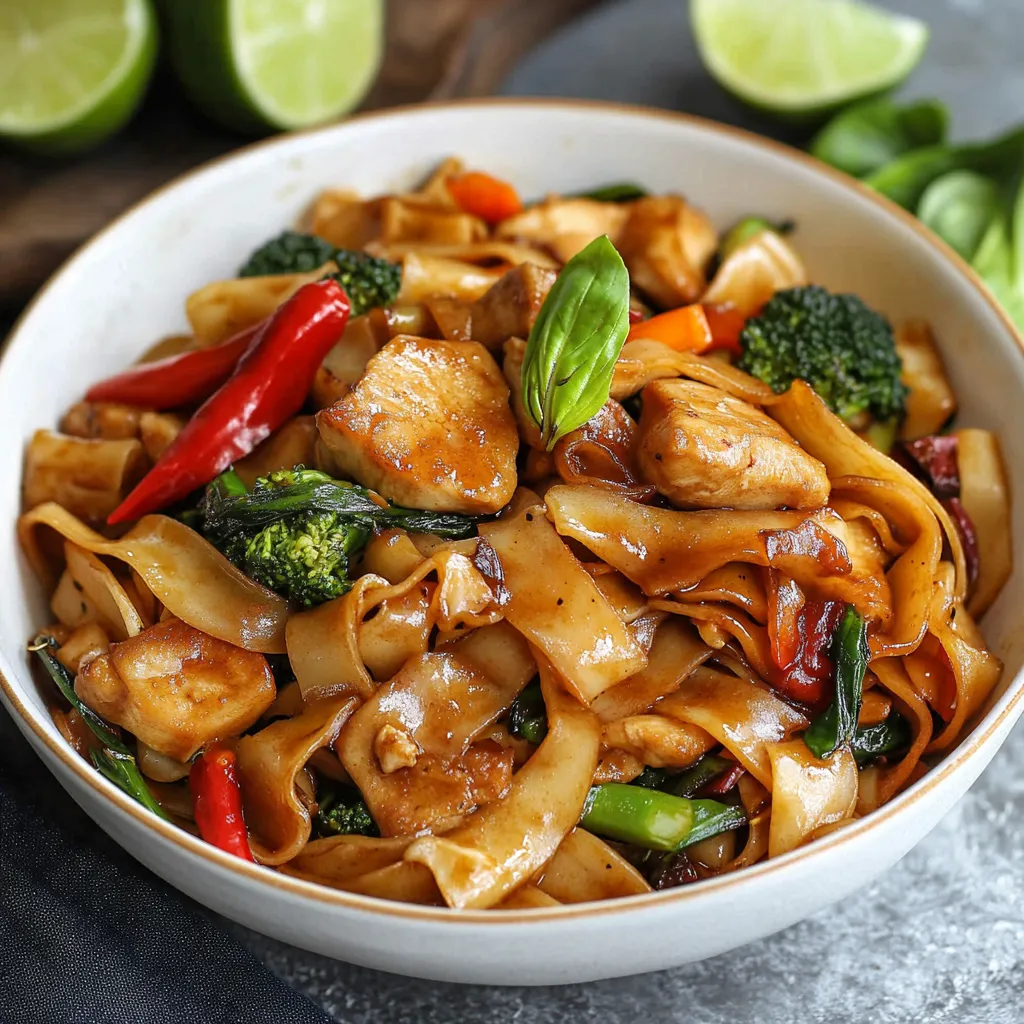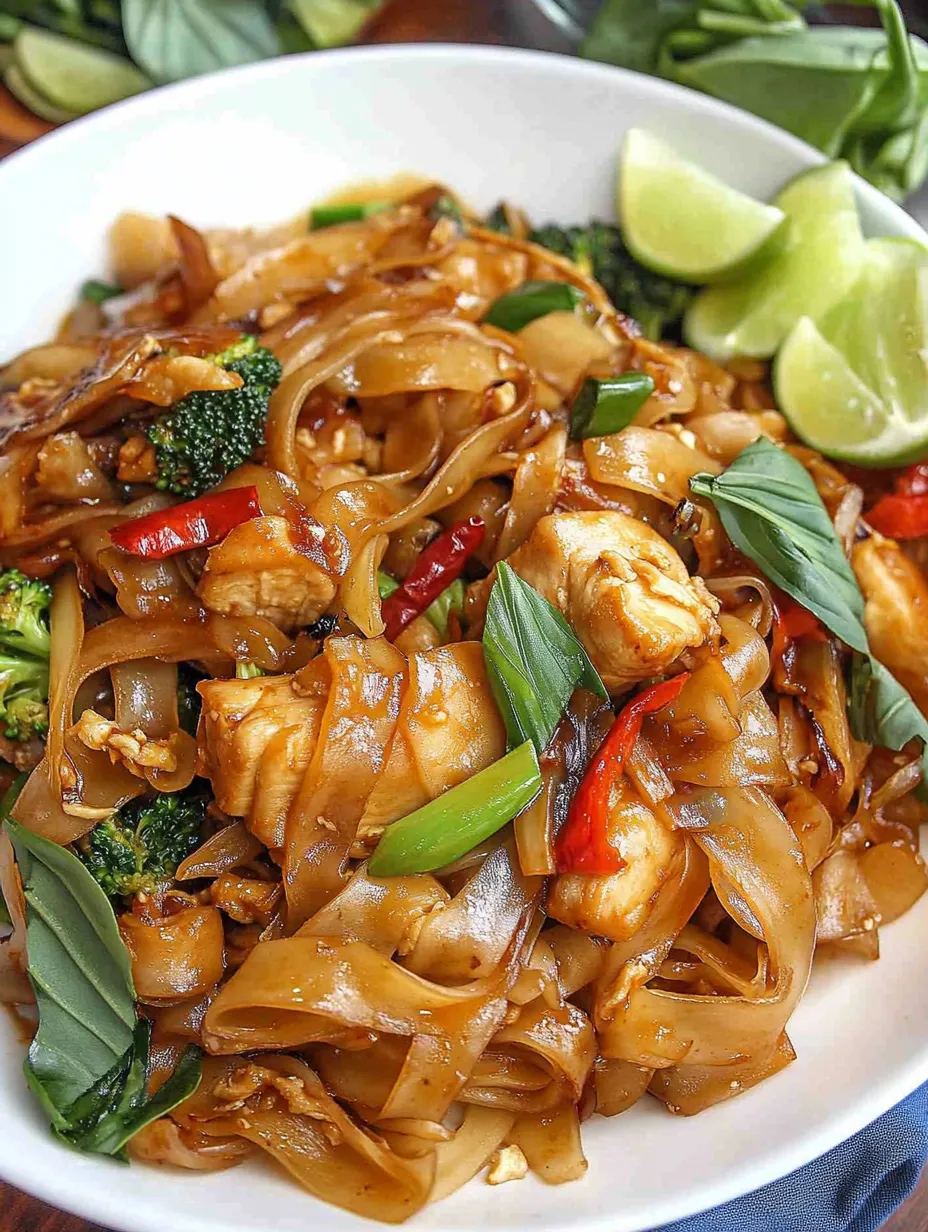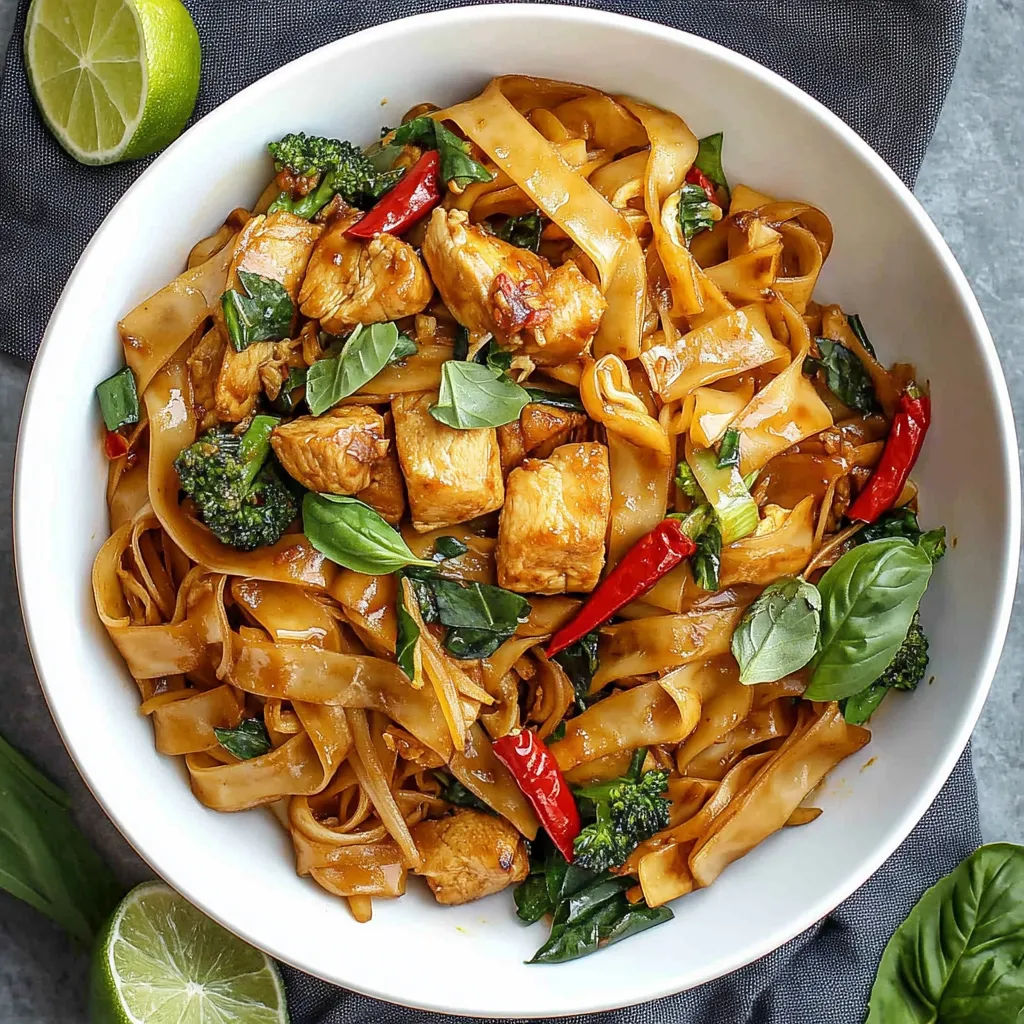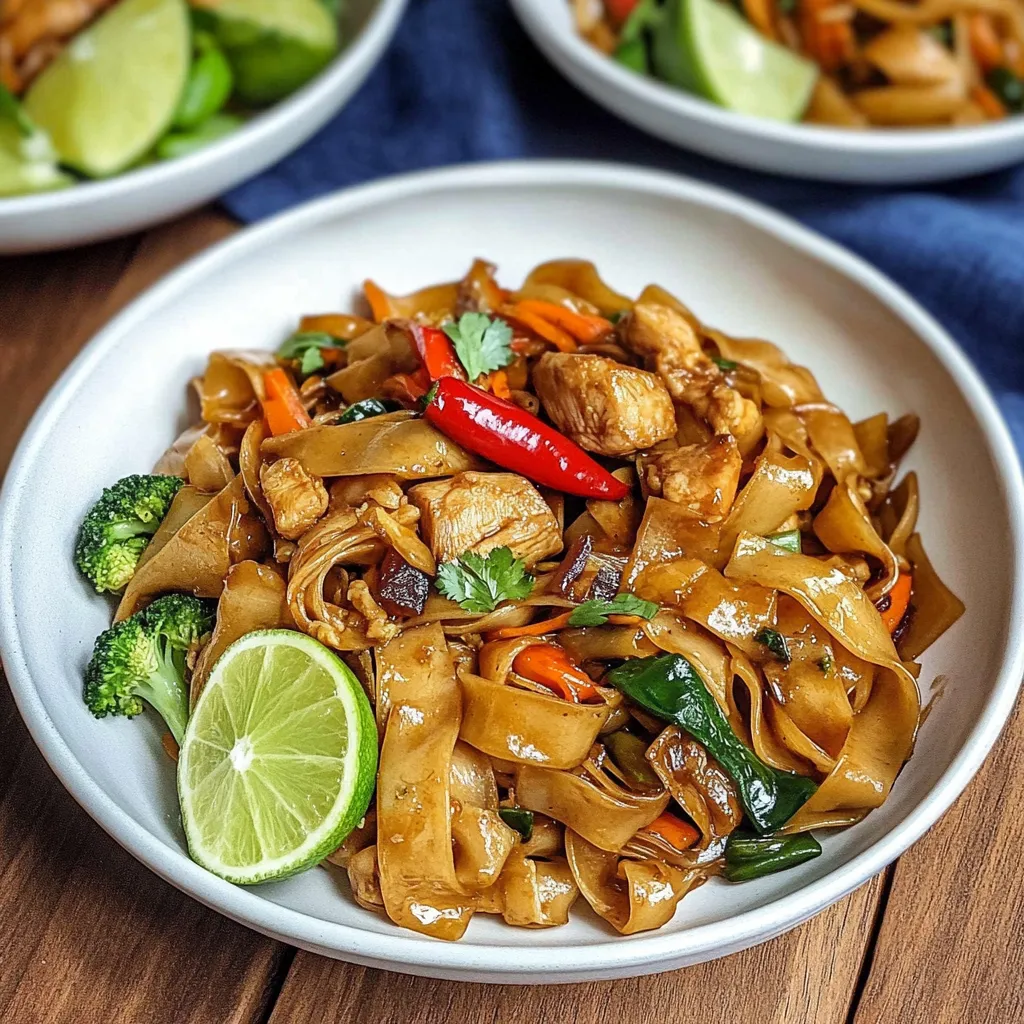 Pin
Pin
The perfect balance of sweet, savory, and spicy flavors comes together in these authentic Thai Drunken Noodles. Wide rice noodles are stir-fried at high heat with tender chicken and crisp vegetables, creating that coveted "wok hei" - the smoky essence that makes restaurant-style noodles irresistible.
After years of perfecting this dish in both wok and skillet, I've learned that success lies in proper preparation and maintaining high heat throughout cooking.
Essential Ingredients
- Wide Rice Noodles: Fresh or dried (if dried, soak in warm water 20-30 minutes)
- Chicken Thighs: Cut into 1-inch pieces for even cooking
- Thai Basil: Regular basil works but lacks authentic flavor
- Thai Bird Chilies: Start with 2-3 for medium heat
- Fresh Garlic: Minced just before cooking
- Quality Oyster Sauce: Provides essential umami base
Detailed Instructions
- 1. Noodle Preparation:
- Start with proper noodle preparation - this makes or breaks your dish. For dried noodles, soak in warm (not hot) water for 20-30 minutes until pliable but still slightly firm. They should bend without breaking. Fresh noodles need only a quick rinse in cold water. Drain thoroughly and toss with a tiny bit of oil to prevent sticking. Never boil your noodles - they'll continue cooking during stir-frying.
- 2. Protein Preparation:
- Cut chicken thighs into uniform 1-inch pieces for even cooking. Season with a pinch of white pepper and salt. Bring meat to room temperature 15 minutes before cooking - cold meat will lower wok temperature. If using shrimp or tofu instead, adjust cooking times accordingly (shrimp 2-3 minutes, tofu 3-4 minutes per side).
- 3. Sauce Mixing:
- Combine oyster sauce, dark soy sauce, and light soy sauce in specific ratios. Dark soy provides color and depth, while light soy adds saltiness. Add fish sauce gradually, tasting as you go - it's easier to add more than to correct over-seasoning. The sauce should taste slightly stronger than you want the final dish, as it will dilute during cooking.
- 4. Vegetable Preparation:
- Cut all vegetables before heating your wok. Slice onions into thin wedges, bell peppers into 1-inch pieces, and broccoli into small florets. Thai chilies should be smashed slightly to release their heat. Keep garlic and chilies separate from other ingredients as they're added first. Having everything ready and organized (mise en place) is crucial for successful stir-frying.
- 5. Wok Heating:
- Whether using a wok or large skillet, proper heat is essential. Heat your pan until a drop of water instantly evaporates - about 1-2 minutes on high heat. Add oil and swirl to coat. The oil should shimmer but not smoke. If using a skillet, you may need to cook in batches to maintain temperature. Don't rush this step - proper heat creates that distinctive wok hei flavor.
- 6. Cooking Process:
- Begin with aromatics - add garlic and chilies to the hot oil, stirring constantly to prevent burning. Add chicken in a single layer, allowing it to sear before stirring. Listen for that sizzle - it indicates proper temperature. Cook vegetables in order of density: onions first, then bell peppers, finishing with leafy greens. Keep ingredients moving constantly.
- 7. Noodle Integration:
- Add drained noodles in smaller portions, tossing quickly to prevent sticking. Pour sauce around the edges of the wok, letting it caramelize slightly before mixing. The noodles should start charring lightly in spots - this creates the authentic flavor. Don't overcrowd; work in batches if needed.
- 8. Final Seasoning:
- Add Thai basil last, tossing just until wilted. The heat from the noodles will release its essential oils. Taste and adjust seasonings - add more fish sauce for salt, sugar for sweetness, or chili for heat. The final dish should balance all four Thai tastes: salty, sweet, sour, and spicy.

Storage and Reheating
Store leftovers in airtight container up to 3 days. When reheating, add a splash of water or chicken broth to prevent dryness. Use high heat in a wok or skillet - microwave reheating makes noodles soggy.

Heat Level Mastery
Understanding and controlling the heat levels throughout cooking is crucial for perfect drunken noodles. Start with high heat for the initial sear, but be prepared to adjust as needed. Watch for visual cues - ingredients should sizzle vigorously but not burn. If you notice excess smoking or burning, reduce heat slightly or temporarily remove the wok from heat. The goal is to maintain a consistent high temperature that chars without burning. Different stoves produce different heat levels, so get to know your equipment and adjust accordingly.
Cultural Significance
Pad Kee Mao, literally translated as "Drunken Noodles," has a fascinating history in Thai cuisine. Despite its name, the dish contains no alcohol - it's said to be perfect for late-night cravings after an evening of drinking, or named for the staggering amount of chilies that make you feel drunk with heat. In Thailand, street vendors cook this dish over roaring flames, creating that distinctive charred flavor that home cooks often find elusive. Understanding this cultural context helps appreciate the importance of high heat and bold seasoning in achieving authentic results.

Final Notes
This dish captures the essence of Thai street food - bold flavors, varying textures, and that irresistible wok hei. Whether you're cooking for family or practicing your stir-fry skills, these drunken noodles offer a rewarding cooking experience and delicious results.
Recipe FAQs
- → Why is it called drunken noodles?
- Despite the name, there's no alcohol - it's said to be perfect for eating after drinking or because the spiciness makes you stagger.
- → Can I make this vegetarian?
- Yes, substitute chicken with tofu or mushrooms, and use vegetarian oyster sauce.
- → What if I can't find Thai basil?
- Regular basil works but won't have the same peppery flavor. Add a pinch of black pepper to compensate.
- → How spicy is this dish?
- It's traditionally quite spicy, but you can adjust heat by reducing or omitting the Thai chilies.
- → Can I prep ingredients ahead?
- Yes, prep vegetables and sauce up to a day ahead, but cook noodles just before serving.
